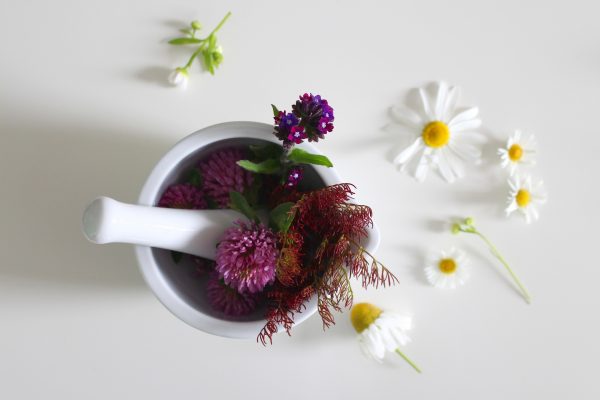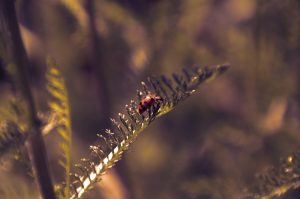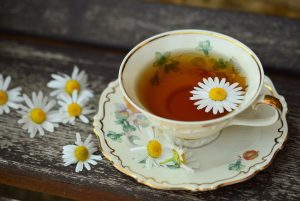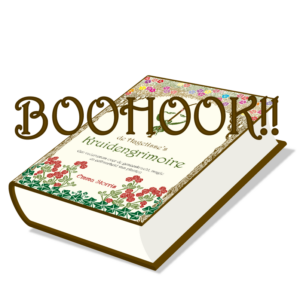How do you process medicinal plants? About infusions, ointments, tinctures and much more.

It’s great to learn about how plants work, but it is even more fun to use them. In this blog I will tell you how you can process medicinal plants. We are going to talk about teas, ointments, tinctures and much more. I will discuss several types of processing that you can do at home in a well-equipped kitchen.
There are all kinds of intricate methods to atomize and freeze dry herbs and extract and distill ingredients. Chances are, however, that you do not have the right equipment or space for that. Fortunately, you don’t need to. You can make use of everything that nature has to offer without high tech devices as well.
The most direct way of processing: fresh medicinal plants
 The most obvious way of using medicinal plants is, of course, when they’re fresh. For example, you can bruise a leaf of yarrow and place it directly on a wound to stop the bleeding. Or you can put a few large tops of a peppermint plant or freshly cut slices of ginger root in your tea water. Of some plants you can use the fresh juice for medicinal purposes. And you can make herb pulp or paste from a larger amount of plant – bruised or blanched – which you can then use for wraps.
The most obvious way of using medicinal plants is, of course, when they’re fresh. For example, you can bruise a leaf of yarrow and place it directly on a wound to stop the bleeding. Or you can put a few large tops of a peppermint plant or freshly cut slices of ginger root in your tea water. Of some plants you can use the fresh juice for medicinal purposes. And you can make herb pulp or paste from a larger amount of plant – bruised or blanched – which you can then use for wraps.
Especially if you have some plants in your garden or growing wild in your area, this is an excellent way to enjoy the goodness of medicinal plants. The flip side is that you can’t find fresh herbs all year round. That is why we humans started drying and storing herbs a long time ago, when we were still hunters and – especially – gatherers. By using dried herbs we can harvest during the optimal season and still use our favourite plants all year round.
A herbal tea for everything
 A method that can be used practically always and everywhere is making an infusion or herbal tea. This method is especially useful for the above-ground plant parts, which are usually the most vulnerable. If you want to use a plant therapeutically, tea is not necessarily the most obvious choice to make. This is especially true for tea per cup. The odds improve if you prepare the amount for a whole day in one go. Why? With tea per cup we usually work with small quantities, which makes it more difficult to obtain the correct dosage and balance of plant parts.
A method that can be used practically always and everywhere is making an infusion or herbal tea. This method is especially useful for the above-ground plant parts, which are usually the most vulnerable. If you want to use a plant therapeutically, tea is not necessarily the most obvious choice to make. This is especially true for tea per cup. The odds improve if you prepare the amount for a whole day in one go. Why? With tea per cup we usually work with small quantities, which makes it more difficult to obtain the correct dosage and balance of plant parts.
This is less so with a plant of which you, for example, only use the leaves or only the flowers, but still… By making your daily amount of infusion in one go you can use a larger amount of plant, which increases the chances that all plant parts used are in balance and your dosage is correct. For clarity’s sake I usually mention the number of grams per cup in the vademecum, but you can easily convert that amount.
Whatever amount you choose, the preparation usually goes something like this: put the indicated amount of herbs in a cup or pot. Pour 150 ml of water (or more if you’ve chosen to make a larger amount) that has just come off the boil. Let this steep for 10 minutes. I usually cover the cup or pot, so that as little as possible evaporates. Next, strain the infusion and it’s ready to drink. You can also use a tea egg or teaspoon, but the herbs will steep less well because the water cannot swirl all around them. If there’s no other option, it will have to do. In that case it may be advisable, though, to at least move the egg through the water now and then and let the tea steep a little longer.
You need a paid membership to view this content
Basic Membership is free!




